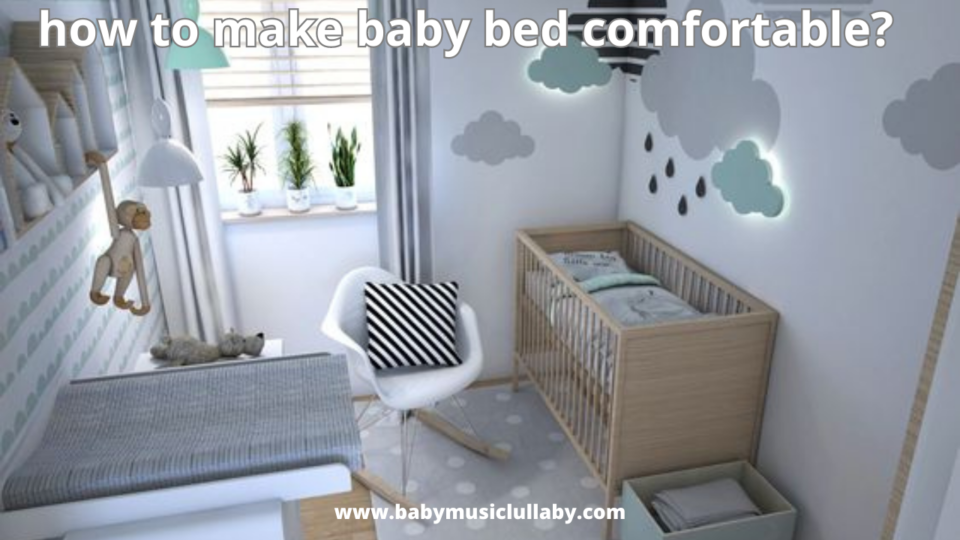Introduction
Creating a comfortable bed for your baby is essential for promoting restful sleep and overall well-being. A cozy and inviting sleep environment can help your little one feel secure and comfortable throughout the night. In this article, we will explore effective strategies to make your baby’s bed as comfortable as possible.
1. Choose a Quality Mattress
Investing in a high-quality mattress is crucial for your baby’s comfort. Look for a firm mattress that provides adequate support for their growing body. Ensure that the mattress fits snugly within the crib or bassinet and doesn’t leave any gaps where your baby could get stuck. A comfortable mattress sets the foundation for a comfortable bed.
2. Opt for Soft and Breathable Bedding
Selecting soft and breathable bedding materials is key to creating a comfortable sleep surface for your baby. Consider the following:
Fitted Sheets
Use fitted sheets specifically designed for the size of your baby’s mattress. Fitted sheets ensure a secure fit and prevent any loose fabric that could pose a suffocation hazard. Choose sheets made from natural fibers, such as cotton, as they are soft, breathable, and gentle on your baby’s delicate skin.
Lightweight Blankets
If needed, use lightweight blankets or sleep sacks appropriate for the temperature of the room. Avoid using heavy or bulky blankets that may cause overheating or discomfort. Ensure that blankets are securely tucked in and do not cover your baby’s face.
Comfortable Pajamas
Dress your baby in comfortable and breathable pajamas suitable for the season. Choose fabrics that are gentle on their skin, such as cotton or bamboo, and opt for loose-fitting styles that allow freedom of movement. Dressing your baby appropriately for sleep helps ensure their comfort throughout the night.
3. Create a Cozy Sleeping Environment
Designing a cozy sleeping environment can help your baby feel secure and relaxed in their bed. Consider the following elements:
Soft Lighting
Use soft and dim lighting in the bedroom to create a calming atmosphere. Harsh or bright lights can be stimulating and make it difficult for your baby to settle into sleep. Consider using a nightlight or low-wattage bulbs to provide a gentle glow during nighttime feedings or diaper changes.
White Noise or Soft Music
Background noise, such as white noise or soft music, can help drown out other sounds that may disrupt your baby’s sleep. White noise machines or gentle lullabies can create a soothing ambiance and provide a consistent sound that lulls your baby into sleep. Be mindful of the volume and choose sounds that are calming rather than stimulating.
Comforting Scents
Some parents find that using a gentle and baby-safe scent, such as lavender, can have a calming effect on their baby’s sleep. Consider using a diffuser or a scented sachet with a mild fragrance to create a comforting aroma in the bedroom. Always ensure that the scent is safe and not overpowering.
4. Maintain Optimal Room Temperature
A comfortable room temperature is essential for your baby’s sleep comfort. Aim to keep the room between 68 to 72 degrees Fahrenheit (20 to 22 degrees Celsius). Use a thermometer to monitor the temperature and adjust bedding or clothing accordingly. Remember that overheating or feeling too cold can disrupt your baby’s sleep.
5. Regularly Clean and Maintain the Bed
Maintaining a clean and hygienic bed is crucial for your baby’s comfort and health. Follow these guidelines:
Wash Bedding Regularly
Regularly wash your baby’s bedding, including sheets, blankets, and sleep sacks, to keep them fresh and free from irritants or allergens. Use mild detergent and avoid using strong scents or fabric softeners that can be irritating to your baby’s sensitive skin.
Check for Wear and Tear
Regularly inspect the mattress and bedding for any signs of wear and tear. Replace worn-out or damaged items promptly to ensure your baby’s safety and comfort.
Keep the Bedding Simple
Avoid using excessive pillows, stuffed animals, or crib bumpers in your baby’s bed. These items can pose suffocation hazards and create discomfort. A simple and clutter-free sleep surface is safer and promotes better sleep.

Conclusion
Creating a comfortable bed for your baby involves careful consideration of various elements, including the mattress, bedding, sleep environment, and cleanliness. By choosing a quality mattress, opting for soft and breathable bedding, creating a cozy sleeping environment, maintaining optimal room temperature, and regularly cleaning and maintaining the bed, you can ensure that your baby has a comfortable and restful sleep experience.

 Subscribe to Get Soothing Lullabies to Help Your Baby to Sleep
Subscribe to Get Soothing Lullabies to Help Your Baby to Sleep